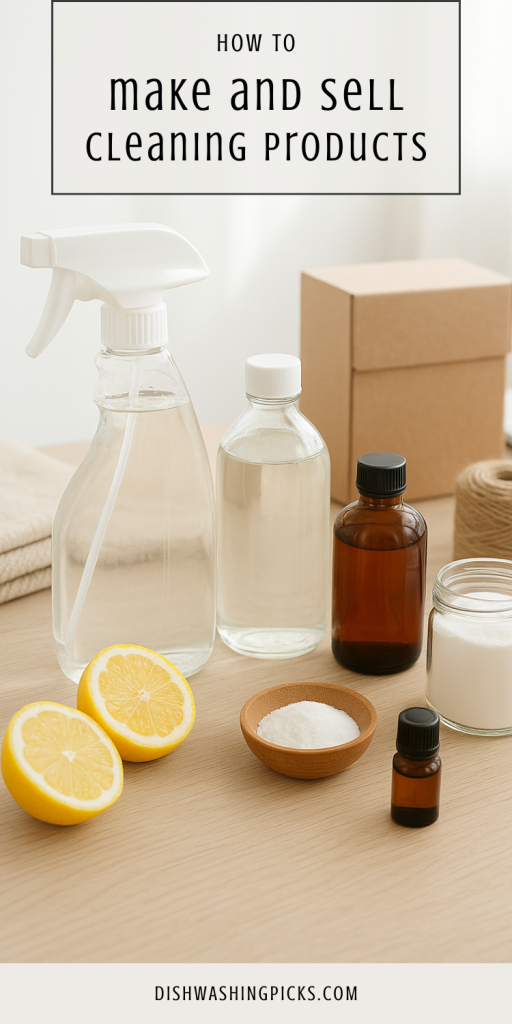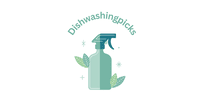
From Kitchen Experiments to Cash Flow
Picture this: you whip up a batch of homemade all-purpose cleaner with vinegar and lemon, spray down your counters, and suddenly a friend asks, “Whoa, what is that? It smells amazing—can I buy some from you?”
And just like that, you’ve stumbled into a business idea.
The truth is, cleaning products are something everybody needs—whether it’s a college student scrubbing their first apartment or a parent chasing sticky fingerprints off the walls. If you can make cleaners that are safe, effective, and maybe even eco-friendly, you’re not just making soap—you’re solving problems. And solving problems? That’s what sells.
So, how do you go from mixing up sprays in your kitchen to actually selling bottles with your own label? Let’s break it down.
Why This Is a Smart Side Hustle (or Full-Time Gig)
Before we dive into recipes, let’s talk about why this is such a solid opportunity.
- Low startup cost. Most cleaners are made with cheap, everyday ingredients.
- High demand. People never stop cleaning (well… they shouldn’t, anyway).
- Eco-friendly trend. Natural, non-toxic products are booming. Consumers love “green” solutions.
- Room for creativity. You can play with scents, packaging, and branding to stand out.
Imagine a shelf lined with bottles you created yourself, each with your logo and scent blend—it’s not just a product, it’s your brand identity.
What You’ll Need to Get Started
Let’s keep it simple. Here’s your starter pack for making and selling cleaners:
- Basic ingredients (vinegar, baking soda, castile soap, rubbing alcohol, hydrogen peroxide, essential oils).
- Measuring tools (cups, spoons, mixing bowls).
- Reusable containers for mixing.
- Spray bottles and jars (glass or sturdy plastic).
- Labels (print your own at home or order online).
- A workspace—your kitchen is fine at the beginning, but make sure it’s clean and organized.
You don’t need a full lab setup to get rolling. Think “organized DIY station,” not “Breaking Bad.”
Product Ideas You Can Make
Here’s where you get to be creative. Some popular DIY cleaning products include:
- All-purpose spray (vinegar, water, essential oils).
- Glass cleaner (vinegar + rubbing alcohol).
- Bathroom scrub (baking soda + castile soap).
- Laundry powder (washing soda, borax, grated soap).
- Floor cleaner (vinegar + warm water + a citrus twist).
- Dish soap (castile soap base with essential oils).
Each of these has real market potential. You can start with two or three core products and expand as you go.
The Fun Part: Mixing Up the Formulas
Want a quick starter recipe? Here’s an easy all-purpose spray you can both use and sell:
- 1 cup distilled water
- 1 cup white vinegar
- 10–15 drops essential oil (lemon, lavender, tea tree—your call)
Mix, pour into a spray bottle, shake before use. Done.
Try this for a scrubbing paste:
- ½ cup baking soda
- Enough liquid castile soap to make a paste
- A few drops of peppermint or eucalyptus oil
Now you’ve got a product line. Imagine giving these out as samples at a local market—people love trying before they buy.
Branding and Marketing: Making Your Cleaner Stand Out
Let’s be honest—half the battle isn’t making the product, it’s selling the vibe.
Think about it: would you rather buy a bottle that says “Generic Vinegar Spray” or one called “Sunny Citrus All-Purpose Cleaner” with a bright, fun label?
Tips for branding:
- Pick a niche. Eco-friendly moms, college students, pet owners—who are you targeting?
- Create a name and logo. Keep it simple but memorable.
- Use social media. TikTok cleaning hacks + your product = free advertising.
- Offer bundles. A “starter cleaning kit” feels more valuable than one spray bottle.
Your branding is the story people buy into, not just the formula inside the bottle.
Legal & Safety Stuff (Don’t Skip This)
Okay, not the fun part, but super important. If you’re selling to the public:
- Label ingredients clearly. Transparency builds trust.
- Include safety instructions. Example: “Do not ingest. Keep away from children.”
- Check local regulations. Some places require business licenses or product testing.
- Insurance. Once you start scaling, consider liability coverage.
This part might feel overwhelming, but it’s what makes your business legit and keeps you protected.
Where and How to Sell Your Products
You’ve got the goods—now where do you put them?
- Local farmers’ markets – People love small-batch, homemade cleaners.
- Etsy or Shopify – Perfect for online sales.
- Social media shops – Sell directly through Instagram, TikTok, or Facebook.
- Word of mouth – Never underestimate your friends and family network.
- Local stores – Boutiques or eco-friendly shops might carry your line.
Start small, gather feedback, and scale up once you know which products are hot sellers.
Turning Suds into Success
At the end of the day, learning how to make and sell cleaning products is about mixing two things: simple recipes and a little entrepreneurial spirit. You don’t need huge investments or a chemistry degree—just creativity, consistency, and a willingness to experiment.
So next time you whip up a lemon-scented spray that makes your counters sparkle, don’t just pat yourself on the back—ask, “Could I sell this?” Chances are, the answer is yes.
Because the world will always need cleaning… and if you play it right, it might just need your cleaning products.
